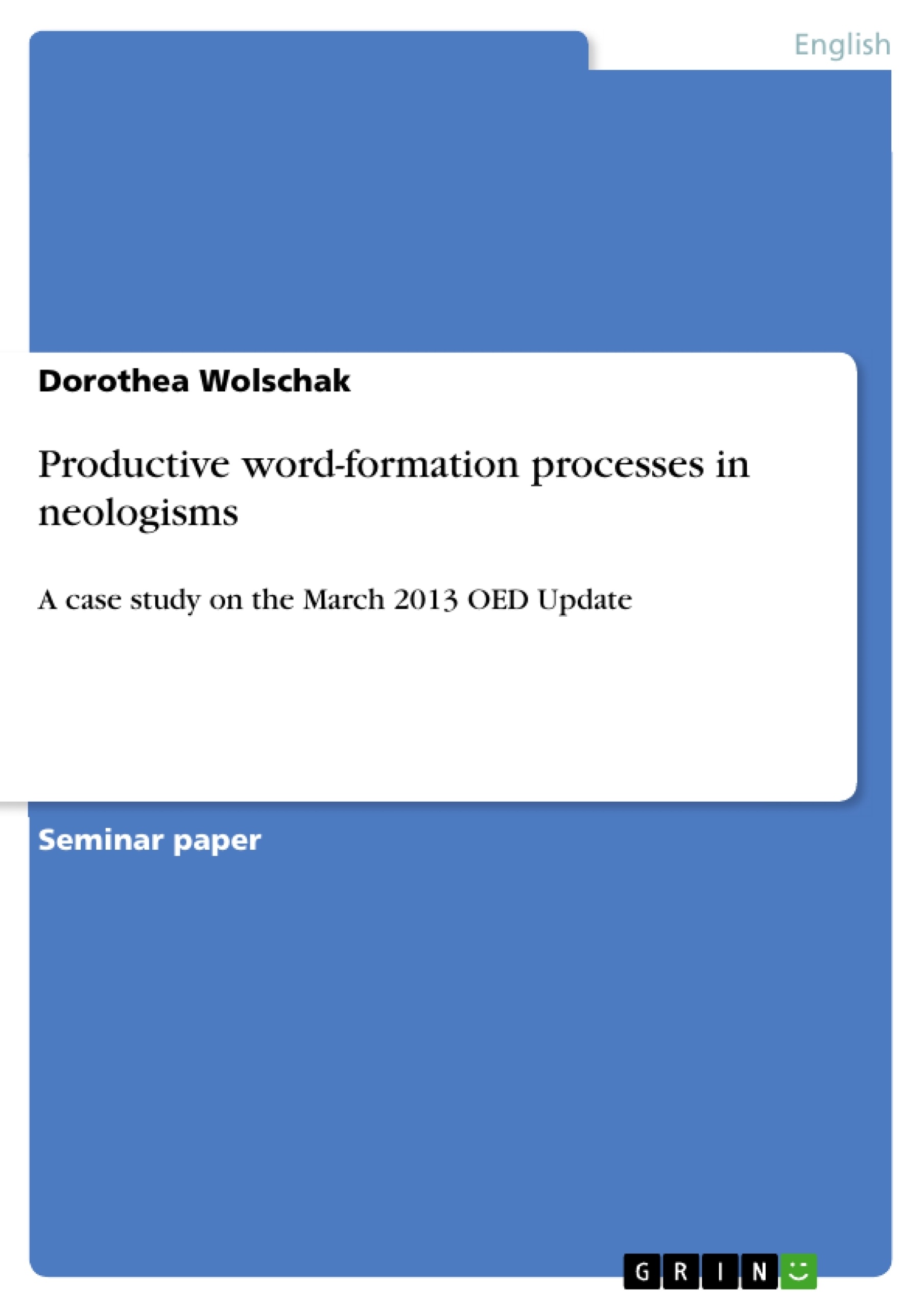People have always been interested in language. First records of Sanskrit grammar, morphology and word-formation rules were written down by Panini over 2500 years ago. So it is not surprising that especially now with all the possibilities technology offers, linguists are determined to identify THE word-formation-theory. In the last century there has been a boom in publishing, creating enormous corpora that allow linguists to study a far wider range of written language. Due to the technological possibility of sound and video recording, there are also numerous spoken accounts of language available now (Bauer 1994, 9). In the last decades however, according to Bauer, word-formation is a rather “confused area of study“(2002, xiii), mostly because of its various terminology as well as different methodological and theoretical approaches. Therefore this paper will concentrate on and use the standard terminology Bauer agreed on in English Word-formation.
Bauer notes furthermore the confusion in the field of productivity in word-formation. The fact that word-formation processes are in fact productive and create new lexemes can be proved by consulting any dictionary of neologisms or updates in other dictionaries. Nevertheless, linguists dispute over the extent to which word-formation is productive generally. Here the dispute between transformationalist and lexicalist positions to productivity should be mentioned (2002, 62 f., 75). But since this paper will focus on specific neologisms added to the Oxford English Dictionary, the decision of what is listed as a new and independent lexicon entry was made by someone else and should not be of any concern here.
This paper will deal with the subject of words, especially newly formed words. What exactly are neologisms and how do they come about? What word-formation processes are involved in the creation of new words? How productive are the different types of word-formation? This paper attempts to answer these questions to a certain extent and furthermore picture the contemporary productivity of word-formation patterns by analysing the new word entries of the March 2013 update in the Oxford English Dictionary as a case study.
Index
1. Introduction
2. New Words
2.1. What is a word?
2.2. Inflection v. Derivation
2.3. Neologisms
2.4. Lexicalization
3. Word-formation
3.1. Productivity
3.2. Word-formation processes
3.2.1. Derivation
3.2.2. Conversion
3.2.3. Compounding
3.2.4. Shortening
3.2.4.1. Blending
3.2.4.2. Clipping
3.2.4.3. Acronyms & Initialisms
3.2.4.4. Back-formation
4. Case Study: OED Analysis
5. Conclusion
Appendix: OED Update March 2013: New Word Entries i
- Quote paper
- Dorothea Wolschak (Author), 2013, Productive word-formation processes in neologisms, Munich, GRIN Verlag, https://www.grin.com/document/275967
-

-

-

-
Upload your own papers! Earn money and win an iPhone X. -

-
Upload your own papers! Earn money and win an iPhone X. -

-
Upload your own papers! Earn money and win an iPhone X. -

-
Upload your own papers! Earn money and win an iPhone X. -

-
Upload your own papers! Earn money and win an iPhone X. -

-
Upload your own papers! Earn money and win an iPhone X.

